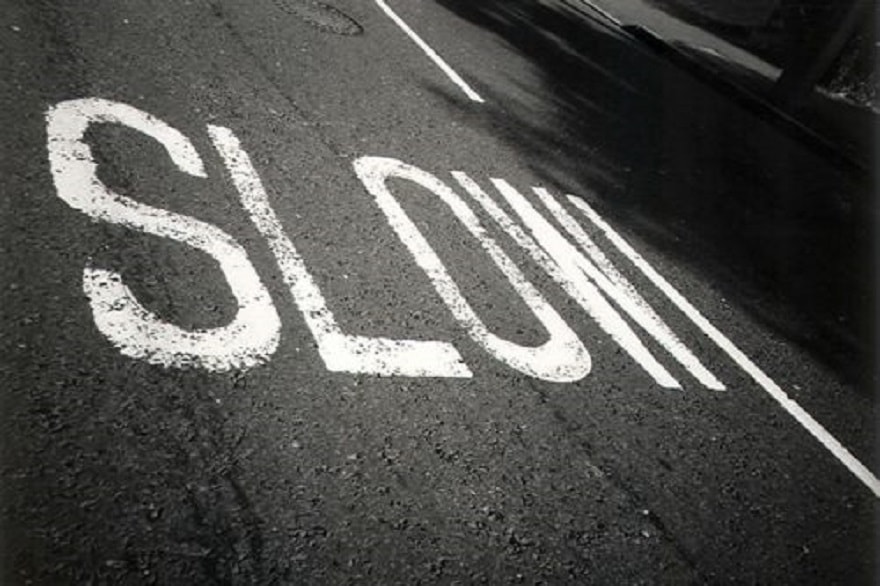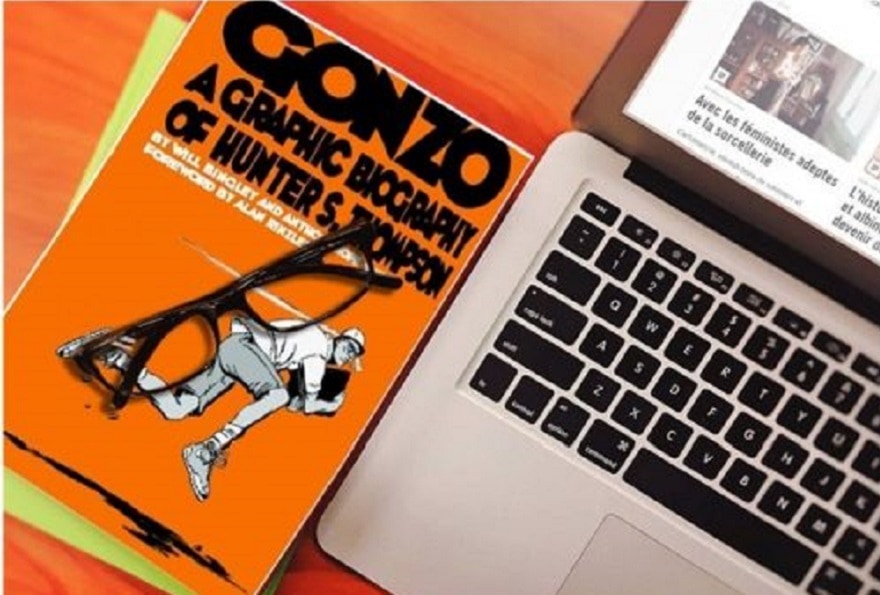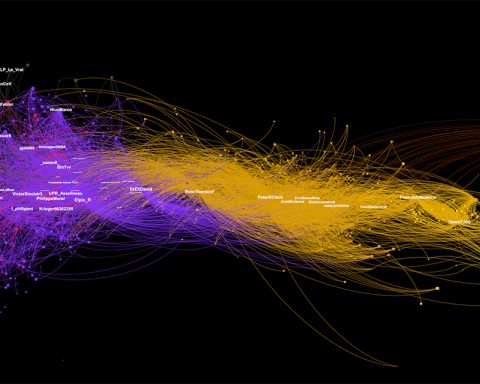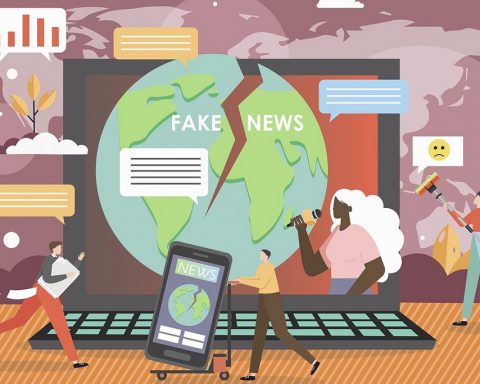"Windows", "mirrors", "symptoms" ... there is no shortage of names to characterize the media's relationship to the "real". The scientific literature is vast on this subject and there are many different theoretical approaches: research on "effects", analysis of "functions", study of "narratives", etc. The advent of digital technology has only accentuated these concerns, while the recent electoral agenda (Brexit, US presidential election, etc.) has given them a prominent place in public arenas.
As part of an introduction to research, the students of the Master 1 "Journalism and Digital Media" at the University of Lorraine, took up the question of how the media, and in particular the Internet, create worlds. Three texts bear witness to the views they have of the media as journalists in training, digital specialists and also as citizens. Between infobesity and immediacy of information, (new?) narratives, but also (re)productions of gendered uses, they draw a critical sketch of the making of contemporary digital worlds. An analysis that has never been more topical .
First text "Infobesity: better informed or a distorted world? "by Camille Bresler, Kévin Bressan, Robin Ecoeur, Élie Guckert, Lucas Hueber.
Photo sourcefree of right
Introduction: Infobesity, the Evil of the 21st Century
Ohile obesity, which is inherent in our lifestyles that are constantly confronted with over-abundance, is nowadays found in the very heart of information. A surplus of which we are both victims and providers: "Infobesity in fact covers a double reality: the exponential increase in the volume of data available but also, and above all, a phenomenon of information overload. We "like", share, exchange and often duplicate the same information", says Caroline Sauvajol-Rialland (2013).
The "it's-not-because it's-better-informed-than-it's-better-informed" is then appropriate. And with good reason: immediacy and information do not necessarily go hand in hand. In order to stand out in the media ocean and succeed in attracting readers, the media sometimes broadcast "of the information collected without any real concern for its reliability. This is why many of them have borrowed considerably from the journalistic conditional tense to clear themselves of inaccuracies in the information.estimates Mounina N'Diaye (2016). Although the search for authenticity remains one of the foundations of journalism.
So it's come to this. At a point where the abundance of information makes it almost impossible to digest; and the nap non-existent. She never stops, never takes a vacation, never takes time off. She is also with us everywhere, always, whenever we give her a minute's respite. Notifications arrive at the same time on our phone. Libération, 20 minutes, Le Monde... Even the regional dailies are getting on board, hoping to grab a share of the market.
Relevant? Not really, but it's all about clicks, numbers, views, buzz. The information is succinct: "who", "when", "what", "where". From time to time "why" and "how", sometimes in less than 140 signs, Twitter makes it happen. No more analysis, no more reflections, no more questions; to the detriment of the quality of the information. What are the consequences of this phenomenon?
Social networks, immediacy and drifts

In a post-attack environment, one may wonder whether social networks have eroded public confidence in news coverage. According to the latest TNS-Sofres barometer (February 2016), carried out for La Croix, distrust is mainly on the side of the Internet, with 31 % of positive opinions. But the speed at which information is spreading on the Internet is forcing the other players in the field (written press, television, radio) to review their strategies and to deal with it just as quickly, at the risk of drifting off course and bidding for more. This was the case in 2015, during the Charlie Hebdo and Hyper Casher attacks, following which the Conseil Supérieur de l'Audiovisuel noted 36 breaches, 15 of which gave rise to warnings and 21, more serious, justified formal notices (CSA, 2015).
But the immediacy of news is also rooted in citizen journalism: everyone can now claim to be a journalist, thanks to the multiplication of digital tools. Anyone can tweet news, without necessarily checking it. If AFP was wrong, in February 2015, in announcing the death of Martin Bouygues (Decembe, 2015), after a series of errors and, above all, a lack of cross-checking of news and reliability of sources, how can we expect citizens not to fall into the same traps?
You have to watch a news feed on Tweetdeck to admire the frenzy that invades social networks in turbulent times (November 13-November 13, in particular). One can understand, therefore, the journalists who take at face value what citizens say, those who are on the spot, without verifying it. Because we must inform, always inform; at the same pace as social networks, to keep our audience captive.
The information race: a new phenomenon?

Journalism has undergone many changes and developments since its inception. But the search for quick information has always been a feature of journalistic practice. In 1631, La Gazette, the first French newspaper, was published, with the King's boots on its shoulders. As early as 1835, with the creation of the AFP (Agence France Presse), foreign news arrives in France, sent to Paris via carrier pigeons before being translated. Shortly afterwards, the telegraph revolutionized the transmission of messages. In 1845, the invention of the rotary press revolutionized newspaper production. The first wireless transmission in France in 1898 and the first radio broadcast in 1921 also changed the work of the journalist and the meaning of information.
With radio, we "live" the event and, for the first time, live. Thanks to the appearance of the transistor, the number of listeners is increasing rapidly, as Elvina Fesneau (2004) explains: "The share of transistor substations in total production exploded from 20 % in 1958, to more than 50 % in 1959, 77 % in 1960, to reach 90% in 1961". Listening to the radio anywhere at any time of day is becoming the trend. Written journalism then fell by 33.20 % as shown on the site La Plume d'Aliocha: "250 copies per 1000 inhabitants in 1950, 167 in 2000". The written press violently criticized the radio, accusing it of opening the door to all kinds of excesses.
When slowness resurfaces

The surplus of information and the drifts concerning the reliability of this information nowadays lead to an inverse effect: the slow journalismThis is a long-form reporting and analysis in the realm of narrative journalism. During the International Geography Festival in Saint-Dié-des-Vosges, Pierre Assouline, a great French journalist, explains, during a conference, the causality between immediacy and slow journalism : "the faster the media, the slower and deeper the readings will be". Snowball effect: the immediacy of the information leads to infobesity and a fortiori, to the slow journalism.
Relying on long formats, rich surveys, quality writing, diversified digital interfaces, young sites tend to slow down the pace of information transmission, thus breaking with the continuous flow that floods the Internet user. Reflection is taking over, slowly but surely. When it comes to the design of a paper, the journalist takes the time to go and see, investigate and work outside the immediate emotion. He thinks about the choice of ingredients, the spices to be added. The final preparation sometimes simmers for several days or even weeks.
The editor isn't the only one taking his time. The reader knows that he or she will need time to savour the alternative information. Instead of reading a few hastily spotted articles on social networks, the slow media is read slowly. At the speed of pages that turn like a real novel, the Internet user "scrolls" the web page. He appreciates the varied flavours, the choice of ingredients, the cooking time of the paper (preferably with a temperature below 451° Fahrenheit).
Knowing without understanding?

The initiators of the long-form journalism movement admit that the amount of information currently available makes it possible to know everything about the world without necessarily understanding anything about it. In this context of short-sightedness, the slow journalism deciphers and gives back depth and relevance to current events. At a time when the consumption of information is constantly increasing, one wonders whether we should not consume less in order to learn more. Understand infobesity vs. slow media.
If the slow journalism takes his time, he has also chosen to abandon the subjects that make the headlines in the traditional media or the web's mastodons; the information is less publicized there. When Le Monde and its colleagues talk about prison overcrowding, Le Quatre Heures (French slow media created in 2014), for its part, takes its readership inside a Nantes prison to explore a particular point of view: "Children growing up with one of their parents in prison" (subject for autumn 2016). This slow media composes a new story every first Wednesday of the month, "a break in the streaming news that dominates the web" (Le Quatre Heures).
But if the slow journalism takes the form of an alternative model, it is, in the end, only a way of returning to the fundamentals of the profession, which have always existed: the romanticism of the journalist-writer, the nobility of the fine pen, the time-consuming work of the investigator. For Philippe Lefait, host of Les Mots de Minuit on France 2 : "...we cannot condone this veritable hysteria of making people consume information constantly and continuously... It's high time, if not to reinvent journalism, at least to regain its fundamentals. (cited in Girod, 2010). Why? To get back to the fundamentals of the profession, to put investigation, inquiry and true deontological principles back at the heart of the profession. The slow journalism is just a return to tradition. It has never disappeared, just less emphasized. Financially speaking.
Conclusion: of the technique and its problems...
Journalists have always tried to convey information as quickly as possible, and that's what we ask of them. But this requirement has always been limited by technical possibilities. And as Paul Virilio (1996) said, when you invent technology, you invent the problems that go with it: inventing the ship was inventing the shipwreck, the automobile the road accidents...
The Internet has not so much revolutionized journalism as it has taken it to its most extreme, horizontal, multifaceted (as a technology that alone contains all information and communication technologies) and immediate form (Degand, 2011).
The Internet has finally made it possible to achieve, in part, the ubiquity that journalists, and readers themselves, were looking for. Information can be produced, disseminated from anywhere in the world and received on many tools (computers, smartphones, tablets) just about anywhere at any time. The Internet makes it possible to get closer to this ideal: to be able to look at the world in its entirety, everywhere, all the time. However, the journalist's omnipotence is an unreachable ideal, already biased by his or her subjectivity.
Camille Bresler, Kévin Bressan, Robin Ecoeur, Élie Guckert, Lucas Hueber - ©Mundus Fabula
Many thanks to Laurent Di Filippo for relaying this text.
Bibliographical references
CSA, 2015, " Traitement des attentats par les télévisions et les radios ", press release of Thursday 12 February. Online: http://www.csa.fr/Espace-Presse/Communiques-de-presse/Traitement-des-attentats-par-les-televisions-et-les-radios-le-Conseil-rend-ses-decisions Accessed 24/11/2016
Decambe A., 2015, " L'AFP et la mort démentie de Martin Bouygues : le film des événements ", Le Monde. Online: http://www.lemonde.fr/actualite-medias/article/2015/02/28/l-afp-et-la-mort-dementie-de-martin-bouygues-le-film-des-evenements_4585294_3236.html Accessed November 24, 2016.
Degand A., 2011, " Le multimédia face à l'immédiat ", Communication, vol. 29, n° 1. Online: http://communication.revues.org/2342; DOI: 10.4000/communication.2342 Accessed 10/11/2016.
Fesneau E., 2004, " Éléments pour une histoire du public des postes à transistors en France ", Le Temps des médias, vol. 2, n° 3. Online: https://www.cairn.info/revue-le-temps-des-medias-2004-2-page-118.htm; DOI:10.3917/tdm.OO3.O118. Accessed November 24, 2016
Girod C., 2010, " Contre l'info low cost, vive la slow info ! ", Lecourrier.ch, http://www.lecourrier.ch/contre_l_info_low_cost_vive_la_slow_info Accessed on 14/11/2016
N'Diaye M., 2016, " Un cas concret de l'infobésité ", Mediapart. Online: https://blogs.mediapart.fr/edition/lyceennes-lyceens/article/120516/un-cas-concret-de-l-infobesite, accessed 15/11/2016.
(La) Plume Daliocha, "La crise de la presse écrite en quelques chiffres". Online : https://laplumedaliocha.wordpress.com/2008/10/08/la-crise-de-la-presse-ecrite-en-quelques-chiffres/ Accessed on 24/11/2016.
Sauvajol-Rialland C., 2013, Infobésité : Comprendre et maîtriser la déferlante d'informations, Paris, Vuibert.
Virilio P., 1996, Un paysage d'événements, Paris, Galilée.












